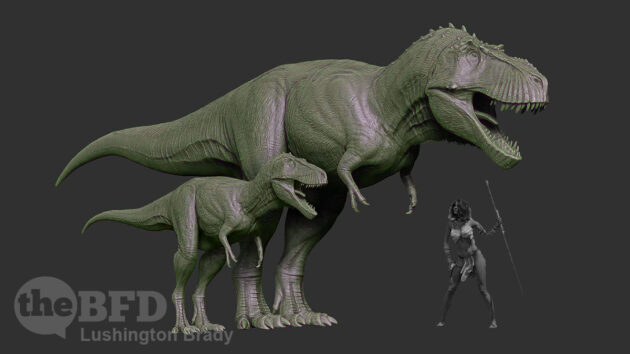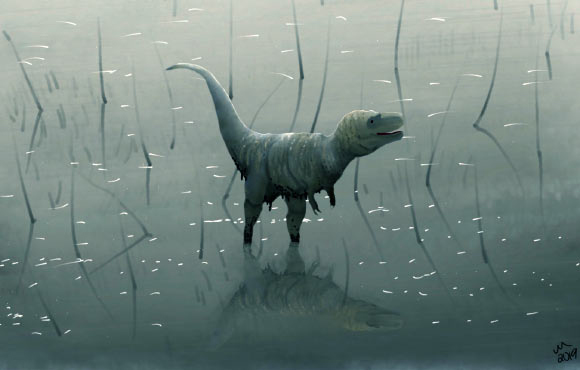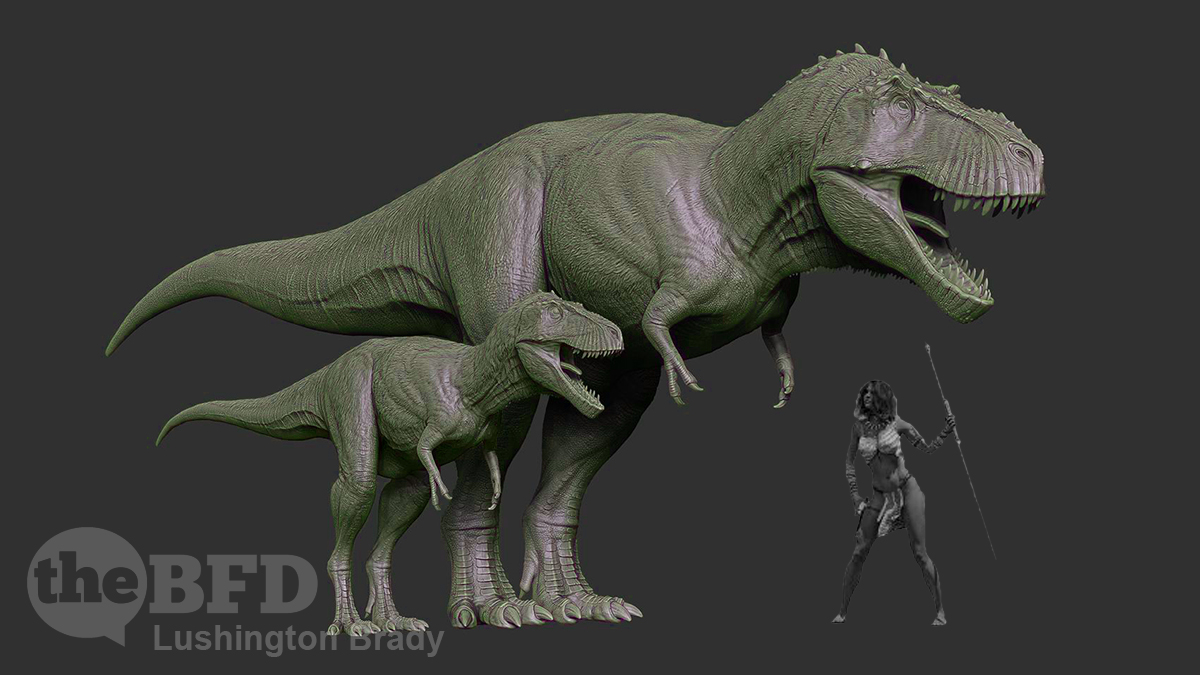As I wrote recently, Tyrannosaurus Rex was slower and yet way scarier than we might have thought. Now, they just got even scarier.
Contrary to the Jurassic Park image of the sprinting, solitary behemoth, new evidence suggests that Tyrannosaurs were likely much slower, but a much more dogged pursuer. Worse, they may have hunted in packs of 10 to 20. Up to 2,000 packs at any given time.
If that doesn’t sound scary enough, we now have reason to think that they could pack a vicious bite from a very young age. Scientists Jack Tseng and Joseph Paterson have been conducting experiments to attempt to gauge the strength of a young Tyrannosaur’s bite.
Last year, he and Peterson made a metal replica of a scimitar-shaped tooth of a 13-year-old juvie T. rex, mounted it on a mechanical testing frame commonly used in engineering and materials science, and tried to crack a cow legbone with it.
Based on 17 successful attempts to match the depth and shape of the bite marks on the fossils — he had to toss out some trials because the fresh bone slid around too much — he determined that a juvenile could have exerted up to 5,641 newtons of force, somewhere between the jaw forces exerted by a hyena and a crocodile.
Compare that to the bite force of an adult T. rex — about 35,000 newtons — or to the puny biting power of humans: 300 newtons.

Apart from completing the picture of just what fearsome creatures Tyrannosaurs would have been at any age, the research helps build a picture of Cretaceous ecosystems. Combined with other fossil discoveries, it also suggests how the long-vanished creatures may have behaved.
“If you are up to almost 6,000 newtons of bite force, that places them in a slightly different weight class,” said Tseng, UC Berkeley assistant professor of integrative biology. “By really refining our estimates of juvenile bite force, we can more succinctly place them in a part of the food web and think about how they may have played the role of a different kind of predator from their larger, adult parents.”
The study reveals that juvenile T. rexes, while not yet able to crush bones like their 30- or 40-year-old parents, were developing their biting techniques and strengthening their jaw muscles to be able do so once their adult teeth came in.
“This actually gives us a little bit of a metric to help us gauge how quickly the bite force is changing from juvenile to adulthood, and something to compare with how the body is changing during that same period of time,” said Peterson, a professor at the University of Wisconsin in Oshkosh and a paleopathologist — a specialist on the injuries and deformities visible in fossil skeletons. “Are they already crushing bone? No, but they are puncturing it. It allows us to get a better idea of how they are feeding, what they are eating. It is just adding more to that full picture of how animals like tyrannosaurs lived and grew and the roles that they played in that ecosystem.”
Bite marks on dinosaur fossils are common, but the hard part is identifying who left them. But one juvenile Tyrannosaur skull has a healed bite mark on its face — a telling clue.
“What, other than another T. rex, would be able to chomp another T. rex and puncture its skull?” he reasoned. Tyrannosaurs, like crocodiles today, played rough, and the wound was likely from a fight over food or territory.
In addition, the puncture holes in the skull, which had healed, were the size and shape of juvenile T. rex teeth, and the spacing fit a juvenile’s tooth gap. Juvenile T. rexes have teeth that are oval in cross section: more knife-like, presumably to cut and tear flesh. Adult T. rexes have teeth with round cross sections: more like posts, to crush bone. Both juveniles and adults could replace lost or broken teeth from spares buried in the jaw that emerged once the socket was empty.
Another living species with an extraordinarily powerful bite is the Tasmanian devil. Devil play behaviour is likewise notably rough-house, including frequent facial bites.
But not all bites are equal. If you’ve ever watched a dog with a bone, you’ll see how it adjusts its bite to best get to the tasty bits.
“They probably were not just chomping down. If you look at modern predators, even reptilian predators, sometimes there is adjustment. Maybe they are finding the most mechanically advantageous place, or the strongest tooth to make their bite[…]Presumably, there is some tuning involved before they make that bite, so they can literally take the best bite forward to make that kill or to damage whatever they are trying to get into.”
As a relatively slow-moving predator vulnerable to such prey defenses as a Triceratops’ horns, making the first bite count was probably crucial for adult Tyrannosaurs. It seems they were honing their brutal biting force from a young age.
“What’s cool about finding bite marks in bone from a juvenile tyrannosaur is that it is tells us that at 13 years old, they weren’t capable of crushing bone yet, but they were already trying, they were puncturing bone, pretty deep. They are probably building up their strength as they get older.”
Science Daily

Please share this article so that others can discover The BFD

